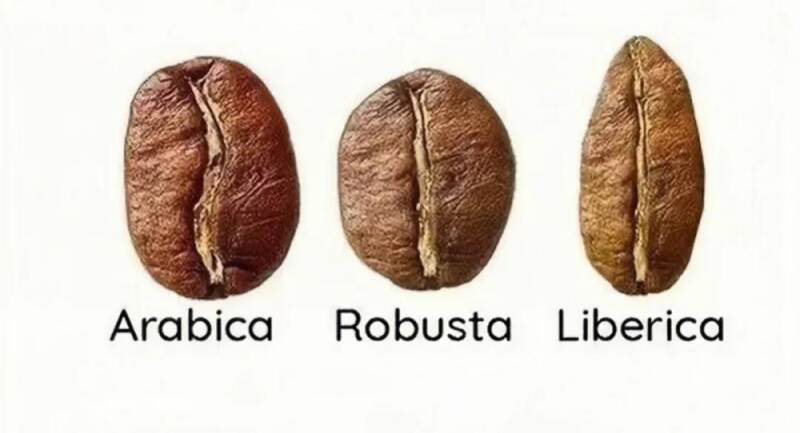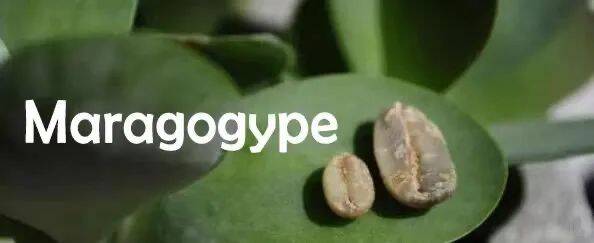What is Maragogipe, the father of Pacamara? What does elephant bean mean? What are the three major varieties of coffee?
So far, 130 different species of the genus Coffee have been identified in biological taxonomy. Among these species, the most common are the three well-known species on the market: Arabica, Robusta, and Liberika. It is important to know that these three are just collective nouns, and they have thousands of varieties. According to the average characteristics of the fruits of these varieties, people give them aliases based on the size of grains: Arabica, Robsta, and Liberica, respectively.

So from this title, we can know the average size of coffee under this kind of distribution. But there are exceptions to everything! The smallest of the three species, Arabica, has such a variety, which is large and full, directly exceeding the average size of the big seed species Liberica! And it is the one with the name of Elephant Bean-Malaggippe!

Maragogype was first discovered in the Maragogippe region, east of Brazil, in 1870, and the bean was named after the region. Malaggippe is very large, three times the size of a conventional Arabica species, and at one point surpassed Liberia. At the time when it was discovered, Arabica was being eroded by leaf rust, and Liberica was able to be grown as a substitute by some farmers. Therefore, at that time, people thought it was a Liberian card species.
(the picture comes from the network) as a result, its attribution has been exposed under genetic testing. It is a mutant of Arabica's "Typica". In other words, it is an Arabica species! By comparison, it is found that it will be bigger than most Libby cards, so there is a tongue twister title like this article! Despite its large size, Marago Gippe is no weaker than the regular Arabica species in flavor: sweet berries, bright citrus acid, thick and silky taste, and its gaudy name is a far cry from it. However, through market observation, we can find that Malaggippe is not a common bean, and the reason is very simple: it is very difficult to grow.
Malaggippe is not just beans and fruits, but its trunks and leaves are also bigger than regular coffee plants. Therefore, it needs more space, nutrients and resources than conventional varieties. On the contrary, the amount of fruit will be less than that of conventional varieties, and the pay is not proportional to the income.
However, those in front of them are all visible costs, which are not worth mentioning! If you want to say that the biggest cost of growing Maragogippe is time! The ripening period of the fruit is much longer than that of conventional Arabica species, which is a long time that most farmers cannot wait. Even if you can afford to wait, there is no guarantee that the changeable weather will not affect the planting. Therefore, under the blessing of such sunk costs, no Cajun Association will deliberately plant Marago Gippe. Growing it is more of a coffee farm that already has a lot of space and a lot of fault tolerance. At present, the cultivation of Malaggippe is mainly distributed in Central and South American countries.
Finally, in front of the street, let's talk about the one thing we need to pay attention to, that is, the alias "Elephant Dou" of Marago Gippi! An elephant bean means that the bean is larger than the size of a conventional bean and is as large as an elephant. It should be noted that elephant beans are not only a variety name, some countries that distinguish beans by size will have "elephant beans" grade. Beans with more than 20 mesh will be sold as elephant beans ~ so friends should pay attention to distinguish between elephant beans and elephant beans.
-END-
Front Street Cafe
No. 10 Baoqian street, Yandun road, Dongshankou, Yuexiu district, Guangzhou, Guangdong province
Important Notice :
前街咖啡 FrontStreet Coffee has moved to new addredd:
FrontStreet Coffee Address: 315,Donghua East Road,GuangZhou
Tel:020 38364473
- Prev

Sky blue star ice dumplings?! No appetite.
▲ Click attention| As soon as the Qingming Festival ended, Starbucks was preparing for the next wave of events. However, the small partners don't need this time. The next wave of activities of Starbus is not a new joint venture with so-and-so IP cooperation, but will be online on time every year, and the star ice dumplings that are self-contained in the zongzi world.
- Next

How do you know how to handle coffee in one bite? What's the difference between sun and water? How to taste hand-brewed coffee?
Front Street stores often brew some of the recently popular beans as demos to share with customers. Then from time to time, a guest friend would drink the bean processing method in a single sip, causing other guests to send out a shocked sigh:"How did you drink the bean processing method in a single sip? "Actually, it's
Related
- Is espresso stored overnight in the refrigerator harmful to your body? Is frozen coffee better than freshly ground coffee?
- What parameters and proportions of water temperature should be used to grind and brew fresh coffee beans? Why can't I drink freshly roasted coffee right away?
- Customers have "changed" Manner's new products! Shop assistant: Please don't mess around!
- Remove sockets in customer areas at Starbucks stores?! Netizen: I won't go if I really tear it down
- What is the difference between the taste steps of sun-dried coffee and washed coffee? Why is sun-cured coffee sweeter and washed coffee sour?
- The recipe for salty grapefruit dirty is revealed! Coffee Festival salty grapefruit dirty coffee making materials parameters ratio milk share!
- How about the flavor of Sunlight 74158 at Sidamo Banshaha Mathieu Processing Factory in Ethiopia? 74158 Share the proportion of coffee brewing parameters!
- What effect does Italian American coffee with filter paper have? Will coffee taste better if it is put on filter paper at the bottom of the powder bowl?
- What is the color difference in coffee beans? What are the characteristics of honey processed coffee beans? Why are the anaerobically treated coffee beans uneven in color?
- How does novice Xiaobai quickly get started and make coffee? Newbies learn to make coffee by hand and share the specific steps and process process!

